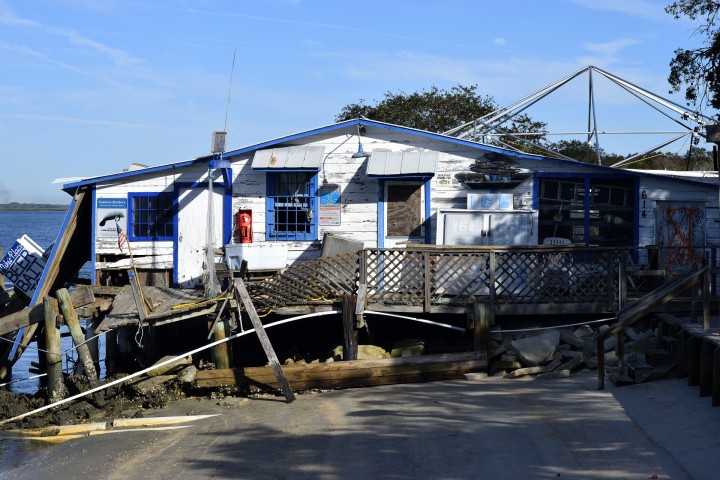If your home is damaged by a leak or flood, it can be the worst nightmare for you. Common causes of water damage are faulty plumbing, leaky roofs, broken water heaters and more. The damage just builds; the longer you delay, the more difficult and expensive it will be to fix the water damage issues. If left untreated, water damage issues can pose severe health problems for the occupants of the house. Water damage problems are among the top three major home insurance issues costing billions of dollars annually. According to a report, the average home insurance cost to address water damage was around $10,000 in 2017. But there are things you can do to fix water damage.
Here are the eight best water damage restoration ideas.
Water Damage Restoration Ideas
1. Identify the Source of Water
The first step in water damage restoration is knowing the source of water. You might be surprised to know that your home can get damaged by three types of water. The first type involves the clean water that comes from rain, leaky pipes and more. You can fix this damage by yourself. The second type includes leaking of slightly dirty, “grey water” that usually comes from the kitchen, toilets, washing machines etc. Although it contains some contaminants, you can repair this type of damage by yourself by following some safety precautions. The third common water damage involves the flooding of black water that flows in from nearby rivers during a natural disaster. Black water can lead to some serious health issues and require cleaning by an expert. One of the steps you could take yourself is simply by installing a RO system to filter water at home, thus, avoiding other negative effects for better health.
As professional repair of water damage can involve significant expense, you can use online discount codes to get the help of professional at reduced costs. Once, you know the source of water damage, you can take steps to fix the problem.
2. Inspect Damaged Materials
The next step to fix common water damage issues is inspecting if there is any mold and mildew growing there. Dark, moist places are favorite locations for mold, and after water leakage, they start growing within 24 hours. If you find mold issues at your home, you should be very careful. All molds are critically harmful to the materials they infest, and some molds are also poisonous to humans. If the mold issues are confined to a small area, cut out the affected material, pack it in a bag and throw it away immediately.
3. Dry Out the Affected Part
Getting rid of the moisture as soon as possible is essential to avoid getting more damage. Small, leaky areas are often easy to dry out compared to larger areas. However, you need to be thorough when doing it yourself. For drying out on a large scale, consider renting a large-capacity dehumidifier to thoroughly dry out the surrounding carpets, woods, and other materials of your home. You should not leave any moisture remaining after your water damage repair.
4. Sanitize Remaining Materials
Of all the steps to repair common water damage, disinfecting the whole house is the one that you can’t ignore. After removing the damaged materials, you should sanitize the house, especially the affected areas. The most common way to do this is by using a bleach solution. Spray the sanitizer lightly and wipe down the affected places before starting the water damage repair. Doing so will help you greatly to make sure there is no mold and bacteria lingering there.
5. Don’t Ignore the Ceilings
Ceilings are no exception when it comes to areas susceptible to common water damage issues. In fact, due to gravity, ceilings are more exposed to damage, and fixing them can cost thousands of dollars. Of course, you don’t want your roof to sag and collapse. So, first, remove all ceiling panels and boards. If you find your ceiling leakage is due to a roof problem, identify the source of a leak where the water is coming.
6. Replace Damaged Wood
The list of tasks to fix common water damage issues cannot be completed without replacing the damaged wood in your home. This includes checking and replacing the wood panels, particularly flooring wood, rotten wood, and wood that is affected by mold or mildew.
7. Remove Stagnant Water
Stagnant water is among the most common water damage issues that can damage your home. So, the next step you should take to fix water damage in your home is wipe out all standing water. Most of the time, you can use a wet/dry vacuum to wipe out all the water, mud and other debris that comes with flood water.
8. Repair and Restore
Last but not least, you should work on repairing and restoring your home. Clean, or if possible, replace all the carpets that are affected by the water damage to avoid the growth of mold and mildew.
When to Call a Professional?
You can repair common water damage, taking into account some safety precautions. However, if you need assistance to fix the water damage issues at your home, seek the help of professionals. An expert team can restore your home along with cleaning and sanitizing it.
We hope you found this blog post on How to Fix Common Water Damage Issues? useful. Be sure to check out our post on Top Reasons You Should Seek Assistance From a Water Damage Pro for more great tips!
Have Experience in the Moving Industry? Want an Additional Income Stream? Work With All Around Moving!
Partner with us, All Around Moving Services Company, Inc., and we’ll help you make money. Click here to learn more.






